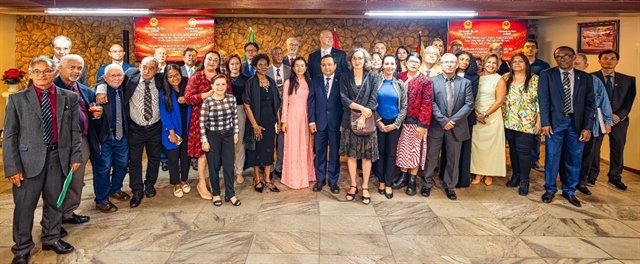.jpg) Sports
Sports
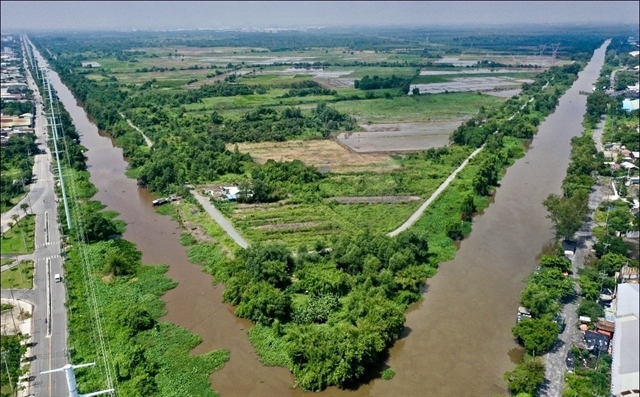
Traditional martial arts
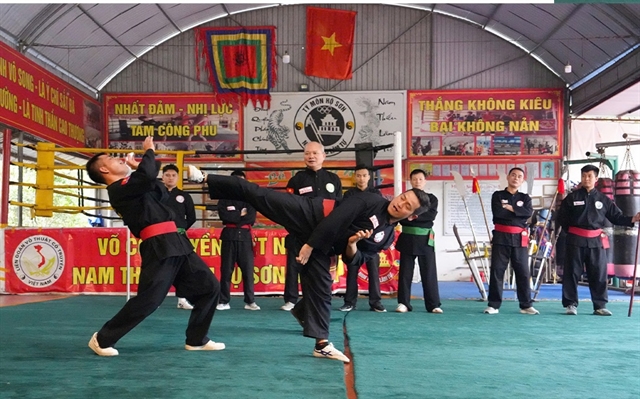 |
| Masters and trainees of the Đức Sung Võ cổ truyền Dojo practise Nam Thiếu Lâm Tự - Sơn Đông style in Thái Nguyên Province. Photo Sông Hương |
Thanh Hà
Vietnamese võ cổ truyền (traditional martial arts) has long been admired and practised across the globe—from Europe to Africa. Yet, paradoxically, it remains relatively unfamiliar in parts of Southeast Asia, where cultural ties are closer.
Experts say Việt Nam should prioritise promoting võ cổ truyền in neighbouring countries before looking further afield.
“In Europe, many Vietnamese martial arts schools thrive, run by both diasporic Vietnamese and local practitioners,” said Grandmaster Trương Văn Bảo, chairman of the Lâm Đồng Province’s Võ Cổ Truyền Federation.
“In Africa, schools were initially founded by masters trained in France or Italy. Since then, they have grown rapidly, attracting male and female students of all ages.”
 |
| A master performs with a cudgel, a Nhất Nam martial art style. -- VNS Photo Trần Hà |
He noted that countries like France, Italy, and those in North Africa already have a rich martial arts culture, including boxing, judo, karate, taekwondo, and Shaolin kung fu. “But many are drawn to Vietnamese martial arts because they admire our people’s resilient struggle for independence. They find our techniques practical—fast, simple, and effective," he said.
However, he pointed out that many countries lack a unified organisational structure.
“Though they practise Vietnamese martial arts, they do so in different ways,” said Bảo, who frequently visits international schools as a master instructor or hosts short-term training sessions in Việt Nam for overseas teachers.
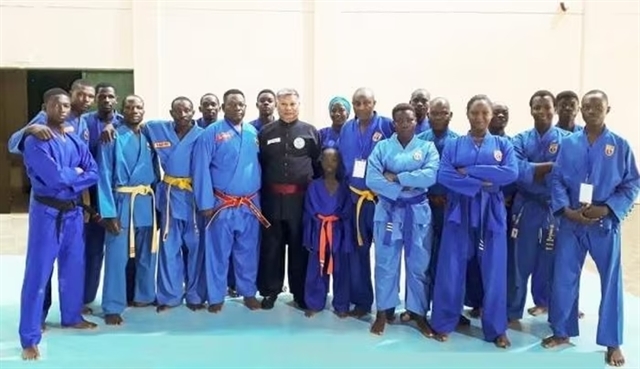 |
| Grandmaster Trương Văn Bảo (centre) with his foreign trainees of Vietnamese traditional martial arts in Burkina Faso. VNS Photo |
In his role as Head of the Department of Traditional Vietnamese Martial Arts Culture at the Institute for Research on Preservation and Development of Southeast Asian Culture, Bảo travels annually to study the martial arts of other countries.
“Many regional martial arts have been widely practised in Việt Nam for years. But ours remains relatively unknown in the region,” he said. “Muay Thai, for example, is extremely popular here, with training centres in cities and provinces nationwide.”
He believes now is the time for võ cổ truyền to establish a strong presence in Southeast Asia. “Every nation has its own identity. Our martial arts have existed for thousands of years, with deep roots in our people’s defence and development of the country.”
Bảo called for greater support from the State and relevant agencies.
“The Việt Nam Olympic Committee should work with its regional counterparts to introduce võ cổ truyền at sports festivals like the Southeast Asian (SEA) Games. That’s how martial arts like pencak silat (Indonesia), bokator and kun khmer (Cambodia), arnis (the Philippines), and lethwei (Myanmar) have gained popularity.”
International spread
Nguyễn Hồng Minh, deputy director of the Sports Authority of Việt Nam, agreed that a coordinated, long-term strategy is crucial.
“While võ cổ truyền is well developed domestically and present in over 70 countries, its global growth hasn’t met expectations,” Minh said.
“Overseas Vietnamese communities have played a key role, but this has led to fragmented practices and a lack of standardisation.”
 |
| A master of Nhất Nam martial arts school performs individually with crescent-shaped weapon, a performance that is known by not many masters. VNS Photo Trần Hà |
He cited South Korean taekwondo as an example. Introduced to Việt Nam in 1962, taekwondo is now recognised nationally, with policy support and integration into school curriculums. Internationally, South Korea sends experts abroad, providing facilities, equipment, training programmes, and instructors to support global expansion.
“To reach that level, we too need a comprehensive strategy, with the cooperation of ministries, agencies, and local authorities,” Minh said.
“We must develop a unified technical system that reflects the essence of Vietnamese martial arts. At the same time, we should build a strong cohort of qualified masters to lead training both at home and abroad.”
He added that promotion should extend beyond sports, incorporating cultural and diplomatic events to broaden awareness.
Nguyễn Ngọc Anh, president of the Việt Nam Traditional Martial Arts Federation, emphasised that an official system of techniques and rules would preserve unity while highlighting distinctive movements to attract new interest.
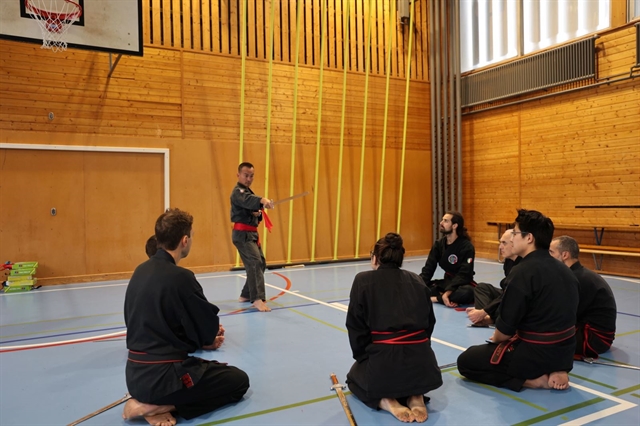 |
| Master Hoàng Kim Ấn instructs his trainees in Switzerland. -- VNA/VNS Photo |
“In addition to preserving the 18 current regulated performances, we should gradually introduce more, adding vitality and identity to our martial arts,” he said.
Anh also called for the use of digital technology to document, store, and disseminate knowledge more effectively. “This would improve the management and transmission of techniques and help preserve our heritage.”
The federation also plans to partner with the tourism sector to integrate traditional martial arts into travel experiences, further boosting its international appeal. VNS


